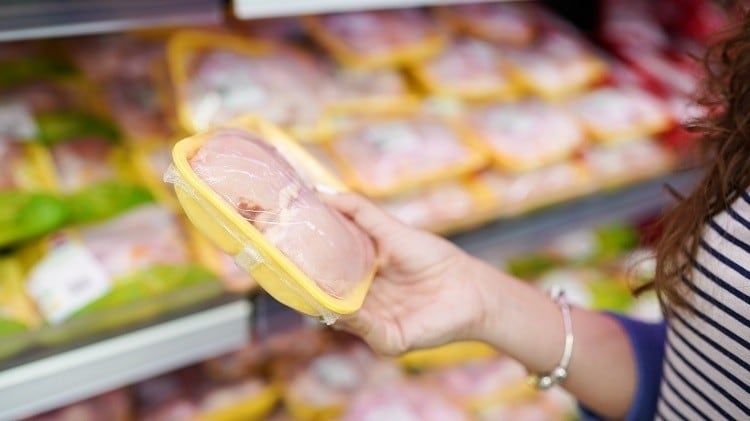In a joint policy briefing published today (13 October), the EU Food Policy Coalition argued "the physical, economic, political and socio-cultural context in which consumers engage with the food system" plays a pivotal role in shaping demand. Changing the food environment is therefore key to transitioning to a sustainable and healthy food system, the report suggested.
Adopting a ‘food environment approach’ means recognising that people’s food choices are shaped by the contexts within which they are made. Therefore, the most ‘effective and equitable’ way to shift consumption is to ensure that the foods that contribute to healthy, sustainable diets are the most available, accessible, affordable, pleasurable and widely promoted.
“The bottom line is that if you want to change diets equitably and effectively, you need to change food environments. And to create enabling food environments for healthy and sustainable diets, you need regulation as the main driver of change,” Nikolai Pushkarev, Policy Coordinator at the European Public Health Alliance (EPHA) said.
The briefing describes the main characteristics of food environments and their potential to create ‘unprecedented changes’ in food systems by ‘empowering, rather than putting the burden on citizens’. It especially focuses on the commercial determinants influencing food choices.
The paper sets out seven ‘entry points’ for action on food environments and provides a list of possible policies to serve as examples. These range from regulatory standards to govern food characteristics, to stricter labelling requirements, restricting the promotion of ‘nutritionally poor’ food and aligning prices with the ‘true cost’ of food to make sustainable and healthy options more economically appealing.
“Both pricing policies and fiscal incentives are part of the action framework, as well as action on promotion and marketing,” Puskarev told FoodNavigator.
“The main focus should be on food system level effects, rather than on individual food level. Individual foods can contribute to sustainable consumption patterns, for instance if they are produced to higher standards, but ultimately it's the impact of consumption patterns that matters most.”
Aligning policy action with Farm to Fork and Green Deal goals
Promoting a healthier and more sustainable food system is ‘critical’ in today’s Europe, where food consumption patterns are undermining people’s health and perpetuating unsustainable production systems.
This issue has been recognised by the European Commission through its Farm to Fork Strategy and Green Deal. But current diets put the attainment of European food policy objectives out of reach, the EU Food Policy Coalition believes.
“The Farm to Fork Strategy aims at creating a sustainable food system by 2030. If we want to ensure this transition and meet the targets, we need regulations to be shaped within a different narrative,” explained Federica Dolce, EU Policy Manager at Safe Food Advocacy Europe (SAFE).
The briefing calls on public authorities to step-up their role in creating enabling food environments, which can generate important co-benefits, such as driving demand for socially just supply chains, and foster agro-ecological and climate-proof production models with high levels of animal welfare.
Madeleine Coste, Policy Officer at Slow Food, stressed that it needs to be easy and affordable to access sustainable food. “Food,” she said, “that is healthy and produced in an environmentally friendly way, but also food that is culturally rich, produced by farmers who receive adequate pay and by farm workers who are treated fairly, and which respects high animal welfare standards. Citizens are making clear they want better and sustainable food, and food environments should be shaped to meet their expectations.”
Meanwhile Olivier De Schutter, Co-chair of the International Panel of Experts on Sustainable Food Systems (IPES-Food), said the policy brief also demonstrates the need to move from individual to collective responsibility.
"This new policy brief by the EU Food Policy Coalition confirms what many of us have been saying for years: to get to sustainable food systems, continuing to place too much responsibility on individual consumers misses the mark. Ensuring the food systems transition we need means working to change the very food environments that condition our choices. And only proactive action by EU, national, and local policymakers, joined up with food industry and civil society engagement will unlock this transition."
Seven action points
The EU Food Policy coalition, brings together civil society and organizations working towards refining and advocating for a shared vision of sustainable food systems at the EU level such as NGOs from a broad spectrum working on food systems, grassroots social movements, farmers organizations, organizations of fishers, trade unions, think tanks and research groups.
Supporting organisations:
AIM, ARC2020, BEUC, BirdLife, CFFA, CiWF, EEB, EHN, EPHA, Euro Coop, Eurocities, Eurogroup for Animals, Feedback, FoEE, FTAO, IFOAM Organics EU, IPES-Food, OSEPI, PAN Europe, SAFE, Slow Food, Unesco Chair in Sustainable Food Systems, Urgenci, WWF




